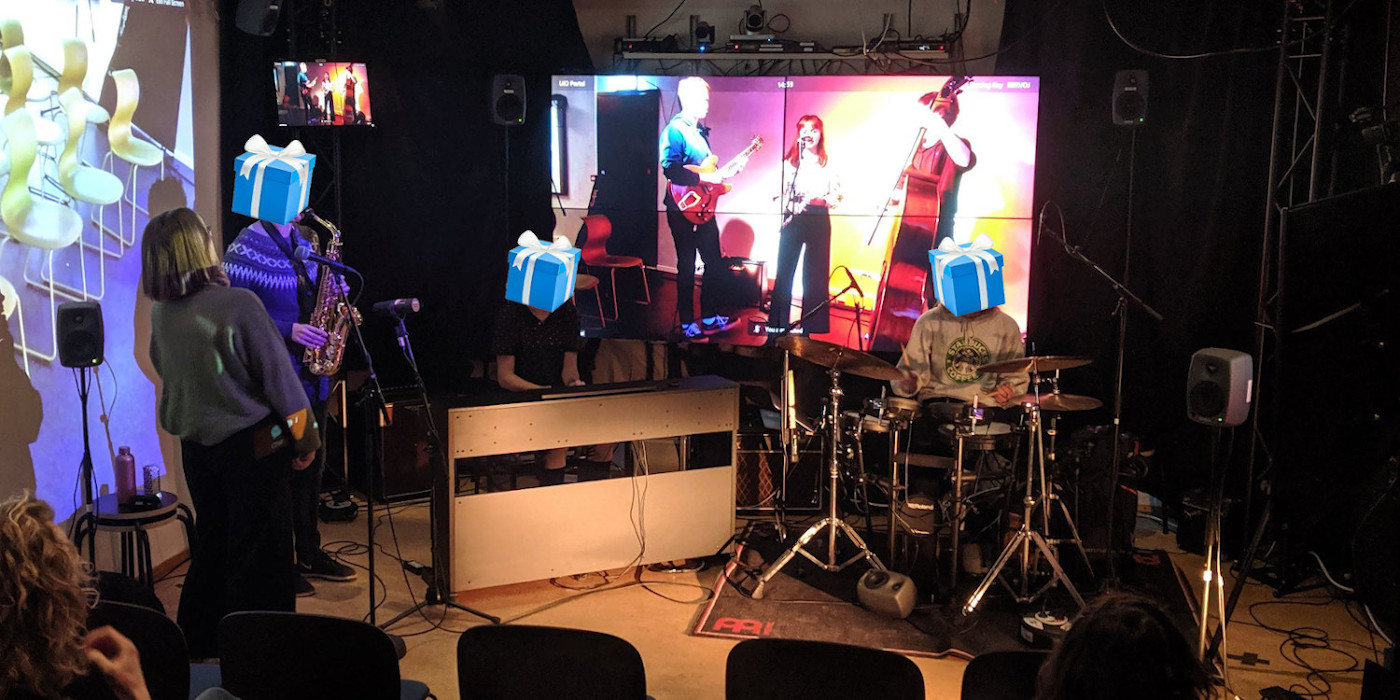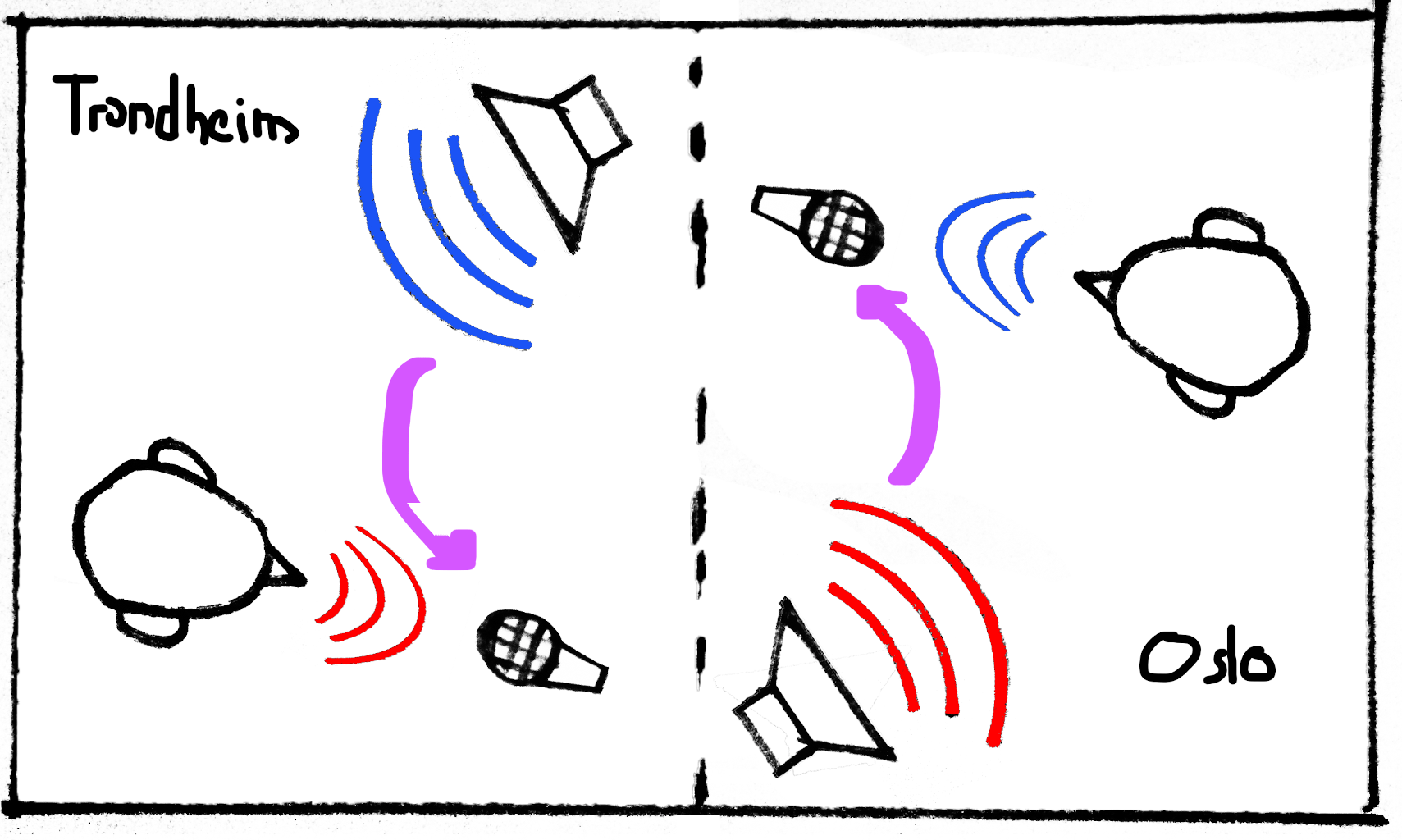The B Team Wraps up the Portal
Reflections
Navigating the MCT Portal been an incredibly interesting journey so far. The program is innovative through a number of ways, one being that the learning environment is part and parcel of the education. In fact, much of the learning experience has revolved around the Portal. There is the daily setup, troubleshooting, and improvements that often coincide with the classes that took place within the learning space. This interactive room provided a degree of responsibility and familiarity over a complex, live audio system.
But on the flip side, the Portal has also been a source of stress for students and teachers alike and has led us to make improvements over the course of the semester. Though many issues remain, I believe we have made considerable progress and have a clear vision of how we ought to improve it in the coming semesters.

Learning Outcomes
Two of the more prominent learning outcomes of the portal course has been becoming familiar with the mixing board and its capabilities as well as the attention to the character of sound during live sessions. We spent a lot of time with the M32 Midas mixer and as a result, the students of the MCT program were able to deftly handle the mapped channels, effects, and hardware when configurations needed to be changed. Because of each of our individual backgrounds, some of us were more experienced with these audio interfaces than others. This led to teaching roles within the student groups at Oslo and Trondheim that were able to assist with bonding as the semester began and fill in the gaps of our formal education. One consequence of this was that when there arrived situations that called for a comprehensive understanding of a particular system, the experienced students often took to the role instead of those who were less familiar. We also became attune to the quality of the audio that we were receiving from Trondheim and during musical performances. Most of this concerned the reduction of feedback and hum within the system but I would also argue that it made us more attentive listeners in the process.

Groupwork
When it came to group work, the weekly setups went steadily the first few weeks and we took turns in setting up the Portal. Later in the semester, with everyone familiar with the setup process, we ended up sharing the work in the morning and the initial setup was quite quick. Many of my classmates worked together, cross group, to make improvements regarding the gain structure of the system or creating a preset that was fine tuned to reduce feedback. This work happened after class and I would say, as a class, we put in a considerable amount of work into taking care of the Portal. My group, in addition to another group as well, spent a good amount of time testing various EQing techniques, polarity inversions, and mic placements. About halfway through the semester we were fairly happy with the preset and the classes that took place in the Portal seemed to run with less interruptions as a result.
Looking towards our glorious future…
Towards the end of the semester, we, as a class, did reach the extent of what we were able to tune given the equipment we had available. Looking ahead, many of the problems that still exist are due to unknown factors regarding the LOLA protocol for audio and video. A number of occasions we were faced with random popping that did not seem to derive from either side but as an artifact of the bandwidth or LOLA’s processing. It might behoove us to try out the beta version of 2.0 or test UltraGrid for video streams. This way we can finally navigate away from Zoom and be fully operational without a 3rd party service. It will also be nice to update the M32 mixer so that we can route individual channels without having to do so in buses of eight.
